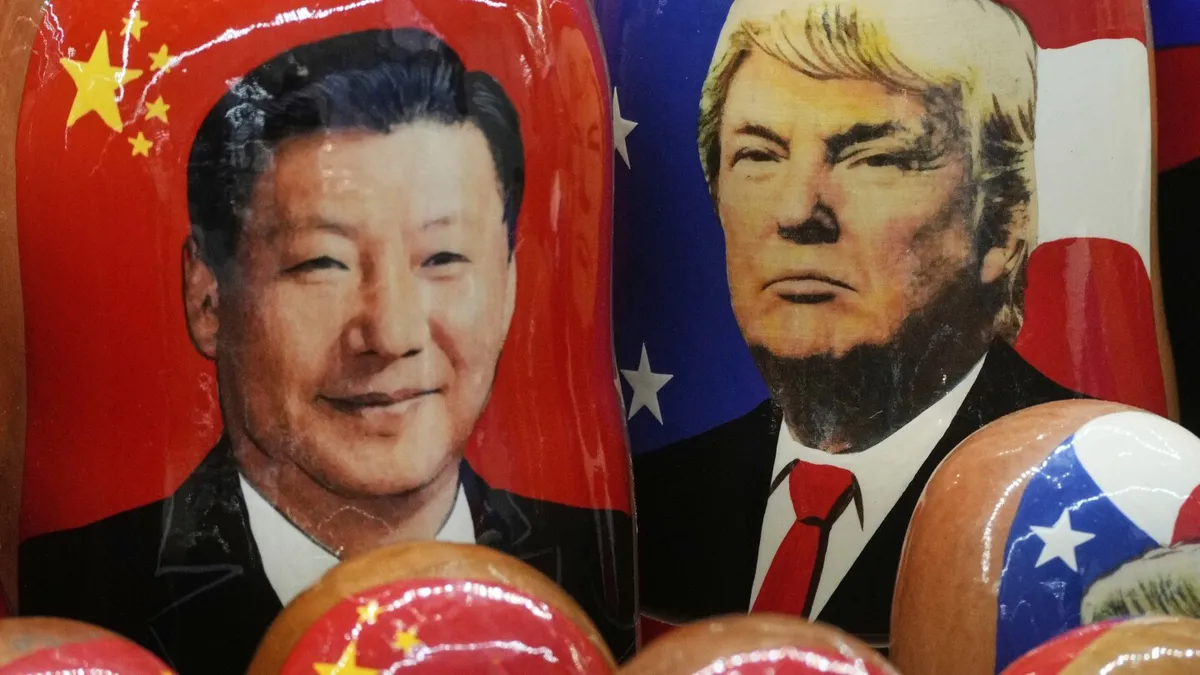
In a significant move to ease economic tensions, President Donald Trump announced on Monday the extension of a trade truce with China for an additional 90 days. This decision postpones a potential showdown between the world's two largest economies, which could have escalated into a major trade conflict. Trump shared the news via his Truth Social platform, indicating that he had signed an executive order to formalize the extension, stating, “all other elements of the Agreement will remain the same.”
Simultaneously, the Chinese government confirmed the tariff pause through its official news agency, Xinhua. The original deadline for this agreement was set to expire at 12:01 a.m. on Tuesday. Had the truce not been extended, the United States could have increased tariffs on Chinese imports from an already imposing rate of 30%, prompting China to retaliate with higher tariffs on U.S. exports.
This extension of the trade truce provides critical breathing room for both nations, allowing them to address their ongoing economic disputes. It may also pave the way for a potential summit later this year between President Trump and Chinese President Xi Jinping. U.S. companies operating in China have welcomed this news, viewing the extension as an opportunity for improved market access and business certainty.
Sean Stein, president of the U.S.-China Business Council, emphasized the importance of this extension, calling it “critical” for the two governments to negotiate a trade agreement. U.S. businesses are hopeful that such an agreement would enhance their market access in China and provide the necessary stability for medium- and long-term business planning. “Securing an agreement on fentanyl that leads to a reduction in U.S. tariffs and a rollback of China’s retaliatory measures is acutely needed to restart U.S. agriculture and energy exports,” Stein noted.
For President Trump, reaching a comprehensive trade pact with China remains an unfinished agenda. His administration has already disrupted the global trading system by imposing double-digit tariffs on numerous countries. The European Union, Japan, and various trading partners have reluctantly agreed to unequal trade deals with Trump, accepting high U.S. tariffs—like the 15% on Japanese and EU imports—to avoid harsher conditions.
Trump’s trade policies have transformed the United States from one of the most open economies into a protectionist stronghold. According to the Budget Lab at Yale University, the average U.S. tariff has surged from around 2.5% at the beginning of the year to an alarming 18.6%, the highest level since 1933.
China's response to Trump’s tariff-heavy policies has tested the limits of the U.S. trade strategy. In retaliation, Beijing has threatened to restrict access to its rare earth minerals and magnets, essential components for various industries, including electric vehicles and aerospace. In June, both nations reached an agreement aimed at easing tensions, with the U.S. agreeing to relax export restrictions on certain technologies, while China promised to facilitate U.S. access to rare earths.
“The U.S. has realized it does not have the upper hand,” said Claire Reade, senior counsel at Arnold & Porter and a former assistant U.S. trade representative for China affairs. The ongoing negotiations have led to a reduction of tariffs that had once soared to 145% against Chinese goods and 125% against U.S. products, which could have led to a total collapse of trade between the two nations.
Despite these negotiations, it remains uncertain whether the United States and China can achieve a grand bargain addressing America’s principal grievances, including inadequate Chinese protection of intellectual property rights and unfair industrial policies favoring Chinese firms in global markets. As of last year, the U.S. trade deficit with China reached a staggering $262 billion.
Experts like Reade anticipate that while limited agreements may surface—such as China's commitment to purchase more American soybeans or stricter controls on chemicals used in fentanyl production—the more challenging issues will persist. “The trade war will continue grinding ahead for years into the future,” cautioned Jeff Moon, a former U.S. diplomat and trade official now leading the China Moon Strategies consultancy.
As both nations navigate this complex economic landscape, the extension of the trade truce offers a temporary reprieve, but the journey towards a lasting resolution remains fraught with challenges.